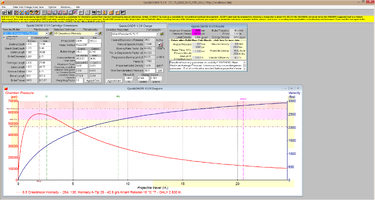If the velocity is identical with any required powder charge and with identical weighed projectiles and identical barrel in the identical firearm... why wouldn't the accuracy be in the same baseline?
How are different powder brands affecting accuracy other than needing different amounts to make the same velocity?
Longer barrels in rifles having harmonic mysteries is not being questioned... but why if velocities leaving the muzzle are identical with different brands and burn/ignition rates should accuracy be different?
Only difference might be consistent velocities but getting back to identical velocity counted from a chronograph wouldn't it be expected these projectiles to have near identical results?
How are different powder brands affecting accuracy other than needing different amounts to make the same velocity?
Longer barrels in rifles having harmonic mysteries is not being questioned... but why if velocities leaving the muzzle are identical with different brands and burn/ignition rates should accuracy be different?
Only difference might be consistent velocities but getting back to identical velocity counted from a chronograph wouldn't it be expected these projectiles to have near identical results?

